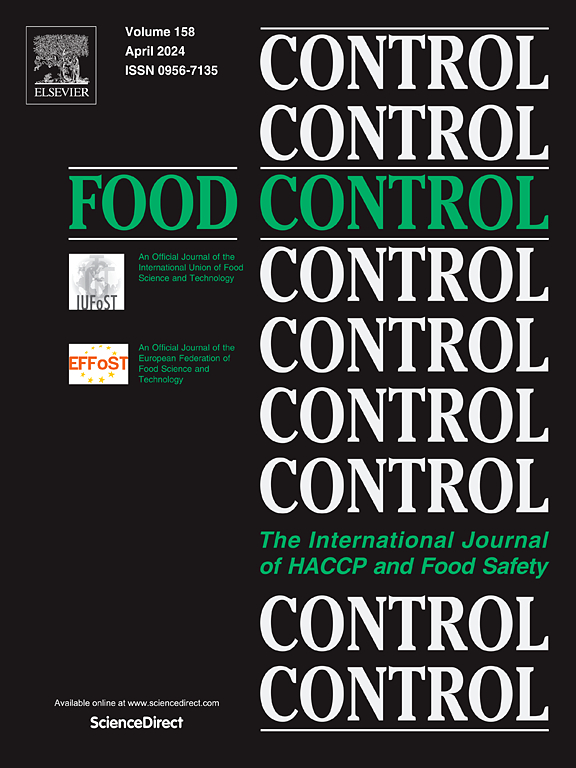Thermal stability of deoxynivalenol, zearalenone, and their modified forms during baking in oat biscuits
IF 5.6
1区 农林科学
Q1 FOOD SCIENCE & TECHNOLOGY
引用次数: 0
Abstract
The present study aimed to investigate the effects of the baking process on some Fusarium mycotoxins (deoxynivalenol (DON), zearalenone (ZEN), T-2 and HT-2 toxins) and their modified forms (deoxynivalenol-3-glucoside (DON-3G), 15-acetyldeoxynivalenol (15-ADON), 3-acetyldeoxynivalenol (3-ADON), deepoxy-deoxynivalenol (DOM-1), α-zearalenol (α-ZEL), and β-zearalenol (β-ZEL)) in oat biscuits. Their content was analysed using HPLC-DAD and UHPLC-MS/MS to evaluate the impact of temperature, time and initial mycotoxin concentration. Also, metabolite screening (sulphated ZEN metabolites, isoDON and norDONs) was performed to provide new insights into the baking effect on mycotoxins. Results indicated that mycotoxin reduction depended significantly on baking temperature and duration. ZEN exhibited higher thermostability than DON-3G, and DON-3G was more thermostable than DON. Under harsh conditions, 15-ADON decreased while DOM-1 increased. isoDON and norDONs emerged during baking. Initial baking phases showed increased levels of ZEN, α-zearalenol-14-S (α-ZEL-14-S) and β-zearalenol-14-S (β-ZEL-14-S) due to the release of hidden mycotoxins, raising safety concerns. T-2 and HT-2 toxins were not found in any oat-based product. The final edible biscuits for each temperature exhibited similar DON and DON-3G concentrations, with higher ZEN levels than initially. Degradation kinetic analysis revealed zero-order kinetics for DON and DON-3G and first-order kinetics for ZEN, offering a predictive tool for mycotoxin levels in biscuits.

求助全文
约1分钟内获得全文
求助全文
来源期刊

Food Control
工程技术-食品科技
CiteScore
12.20
自引率
6.70%
发文量
758
审稿时长
33 days
期刊介绍:
Food Control is an international journal that provides essential information for those involved in food safety and process control.
Food Control covers the below areas that relate to food process control or to food safety of human foods:
• Microbial food safety and antimicrobial systems
• Mycotoxins
• Hazard analysis, HACCP and food safety objectives
• Risk assessment, including microbial and chemical hazards
• Quality assurance
• Good manufacturing practices
• Food process systems design and control
• Food Packaging technology and materials in contact with foods
• Rapid methods of analysis and detection, including sensor technology
• Codes of practice, legislation and international harmonization
• Consumer issues
• Education, training and research needs.
The scope of Food Control is comprehensive and includes original research papers, authoritative reviews, short communications, comment articles that report on new developments in food control, and position papers.
 求助内容:
求助内容: 应助结果提醒方式:
应助结果提醒方式:


